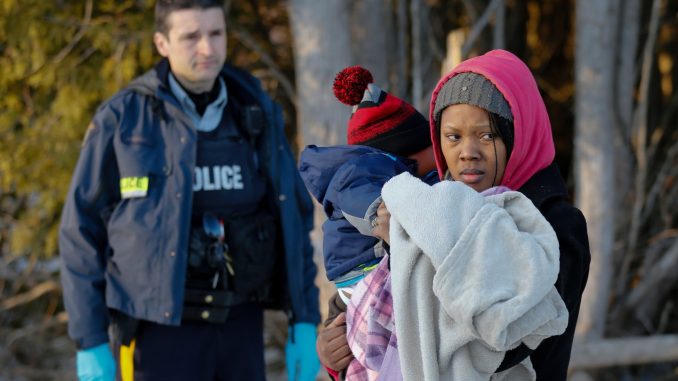
Canada welcomed the highest number of new immigrants in more than a century last year, opening its doors to 341,180 people from 175 different countries.
That annual total, which exceeded Ottawa’s target of 330,000, was topped only twice before — in 1913, when 401,000 new immigrants arrived in the country, and 1912, when 376,000 settled here. The vast majority back then came from Europe as a result of this country’s campaign for newcomers to settle in Western Canada.
Daniel Joseph, 37, explained why he and his wife came to Canada.
“We’ve been to the U.S. and Australia. We love Canada’s tolerance and multiculturalism. We came from cosmopolitan Singapore and would love a slower-paced life. Canada is so welcoming and we like the opportunity to interact with people from multi-faith backgrounds, Christians of different kind, Buddhists and Muslims.”
He and his wife, Janice Renee Low, 40, landed in Canada in February 2019.
“This is a big country and we want to explore the urban, suburban and rural lifestyles. This is exciting,” added Joseph, a former high school teacher, who now studies theology at the University of Toronto while his wife is looking for employment in business administration.
For a third year in a row, India was the top immigrant source for Canada, with 85,585, or about one in four hailing from that country, according to the latest federal immigration data. China was second, at 30,260, and the Philippines, at 27,815, was third.
Over the last five years, the annual number of Indian immigrants grew by 118 per cent.
India also accounted for over 34 per cent of Canada’s international student population with almost 220,000 enrolled in a Canadian school in 2019, representing a 350-per-cent growth from 48,765 in 2015, largely a result of a federal program by Ottawa to fast-track study permit applications for students from India.
Immigration policy analyst Kareem El-Assal believes India’s numbers have much to do with the significant middle-class population in the world’s second-most populated country, where many residents have high levels of English-language proficiency and education that meet Canada’s immigrant selection criteria, which awards Canadian educational credentials that international graduates share.
He said Canada’s appeal to Indian immigrants — many of whom have been temporary workers in the United States — has also been boosted by anti-immigrant sentiment in the U.S. under the Trump administration, which advocates jobs for Americans first.
“This has resulted in Indian nationals living in the U.S. choosing to apply for Canadian permanent residence,” said El-Assal, director of policy and digital strategy at CanadaVisa, an immigration website run by a Montreal-based law firm.
While the number of immigrants from China has remained at around 30,000 a year, the number of permanent residents from the Philippines dropped almost by half from its peak of 50,845 in 2015 to 27,815 last year.
“The Philippines has fallen behind China. This is because Canada has significantly reduced its intake under the Caregiver Program. The overwhelming majority of immigrants admitted through the Caregiver Program come from the Philippines,” explains El-Assal.
A whopping 45 per cent — or 153,340 newcomers — in 2019 intended to settle in Ontario, making the province by far the most popular immigrant destination. It was followed by British Columbia (50,845), Alberta (43,685) and Quebec (40,545), which has seen its share drop sharply from five years ago when it was just behind Ontario as the next most popular province for immigrants. The decline is likely a result of the Coalition Avenir Québec government’s 20 per cent cut to immigration levels in 2019, said El-Assal.
Immigrants continued to flock to major Canadian urban centres, with 117,720 or 34.5 per cent settling in the Greater Toronto Area, followed by Vancouver (40,020), Montreal (34,620), Calgary (19,625) and Edmonton (16,420).
In contrast, the number of new immigrants to Nunavut, Yukon, Saskatchewan, Manitoba, New Brunswick, Nova Scotia, Prince Edward Island and Newfoundland in 2019 totalled just 53,270.
Overall, economic immigrants who came as skilled workers and investors made up about 58 per cent of the 2019 newcomer cohort, while 27 per cent came under the family class, which includes spouses and parents. The remaining 15 per cent came as refugees or on humanitarian and compassionate grounds, among other reasons.
The federal government has set a target for 2020 to bring in between 340,000 and 360,000 new permanent residents.
*Story by thestar.com